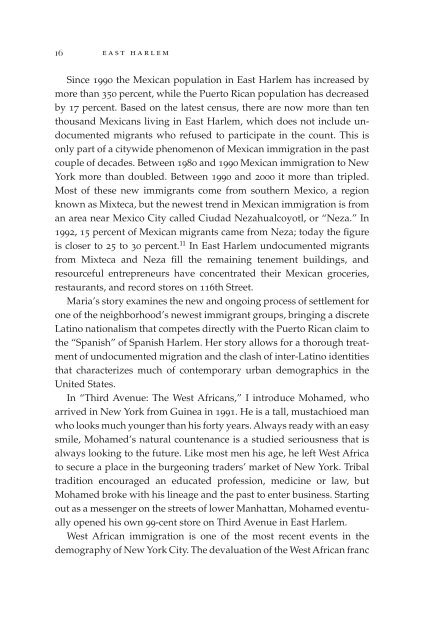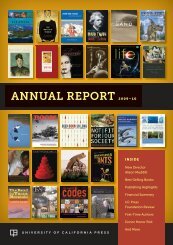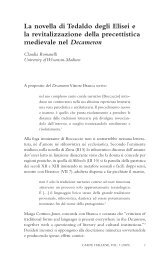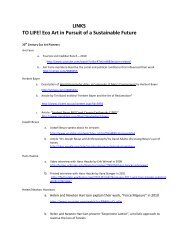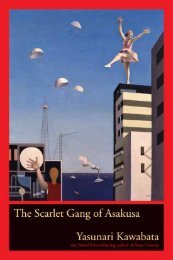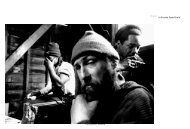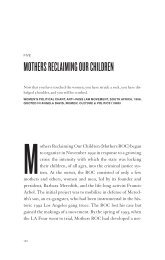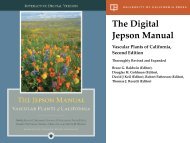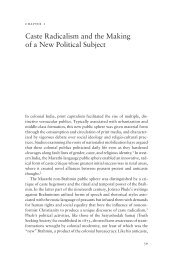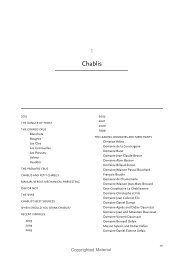Read Chapter 1 (PDF) - University of California Press
Read Chapter 1 (PDF) - University of California Press
Read Chapter 1 (PDF) - University of California Press
You also want an ePaper? Increase the reach of your titles
YUMPU automatically turns print PDFs into web optimized ePapers that Google loves.
16<br />
east harlem<br />
Since 1990 the Mexican population in East Harlem has increased by<br />
more than 350 percent, while the Puerto Rican population has decreased<br />
by 17 percent. Based on the latest census, there are now more than ten<br />
thousand Mexicans living in East Harlem, which does not include undocumented<br />
migrants who refused to participate in the count. This is<br />
only part <strong>of</strong> a citywide phenomenon <strong>of</strong> Mexican immigration in the past<br />
couple <strong>of</strong> decades. Between 1980 and 1990 Mexican immigration to New<br />
York more than doubled. Between 1990 and 2000 it more than tripled.<br />
Most <strong>of</strong> these new immigrants come from southern Mexico, a region<br />
known as Mixteca, but the newest trend in Mexican immigration is from<br />
an area near Mexico City called Ciudad Nezahualcoyotl, or “Neza.” In<br />
1992, 15 percent <strong>of</strong> Mexican migrants came from Neza; today the figure<br />
is closer to 25 to 30 percent. 11 In East Harlem undocumented migrants<br />
from Mixteca and Neza fill the remaining tenement buildings, and<br />
resourceful entrepreneurs have concentrated their Mexican groceries,<br />
restaurants, and record stores on 116th Street.<br />
Maria’s story examines the new and ongoing process <strong>of</strong> settlement for<br />
one <strong>of</strong> the neighborhood’s newest immigrant groups, bringing a discrete<br />
Latino nationalism that competes directly with the Puerto Rican claim to<br />
the “Spanish” <strong>of</strong> Spanish Harlem. Her story allows for a thorough treatment<br />
<strong>of</strong> undocumented migration and the clash <strong>of</strong> inter-Latino identities<br />
that characterizes much <strong>of</strong> contemporary urban demographics in the<br />
United States.<br />
In “Third Avenue: The West Africans,” I introduce Mohamed, who<br />
arrived in New York from Guinea in 1991. He is a tall, mustachioed man<br />
who looks much younger than his forty years. Always ready with an easy<br />
smile, Mohamed’s natural countenance is a studied seriousness that is<br />
always looking to the future. Like most men his age, he left West Africa<br />
to secure a place in the burgeoning traders’ market <strong>of</strong> New York. Tribal<br />
tradition encouraged an educated pr<strong>of</strong>ession, medicine or law, but<br />
Mohamed broke with his lineage and the past to enter business. Starting<br />
out as a messenger on the streets <strong>of</strong> lower Manhattan, Mohamed eventually<br />
opened his own 99-cent store on Third Avenue in East Harlem.<br />
West African immigration is one <strong>of</strong> the most recent events in the<br />
demography <strong>of</strong> New York City. The devaluation <strong>of</strong> the West African franc


